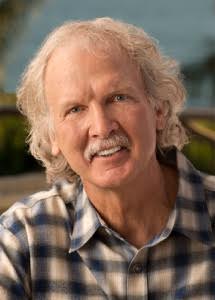
By Mike Beanan
Have you ever been on your surfboard and found yourself drifting upcoast? Or while swimming through the kelp forest, you notice the kelp fronds leaning from the strong current?
In 1542, Juan Rodriquez Cabrillo’s exploration of the California coast “discovered” the Gulf of Santa Catalina. From the deck of the 100-foot San Salvador galleon, Cabrillo observed a necklace of islands on his left port side beginning around San Quintin in Baja California as he sailed north drifting with the seasonal Southern California Counter Current from Cabo San Lucas into Laguna’s California waters. The Channel Islands offered protected waters and the seasonal counter currents provided a flowing super highway transporting his small flotilla traveling north. Around 1602, the explorer Vizcaino named these protected waters the “Gulf of Santa Catalina” to distinguish the area from the open waters of the Pacific Ocean.
The same seasonal counter current has surfers constantly paddling to hold position for the next wave. It’s a challenge on the return leg of a long open ocean swim.
If we don’t know where we are at, how do we know where we are going?
The Gulf of Santa Catalina mirrors inland land features with a half-mile deep underwater valley surrounded by semi-submerged “mountains” functioning as a chain of islands. Today, Laguna flushes an average of 1,870,000 gallons of secondary sewage into these gulf waters assuming it goes “away”. Yet, gulf waters circulate and re-circulate whatever we send away to the ocean and it bioaccumulates in sea life.
Is Laguna a Gulf of Santa Catalina town or Pacific Ocean community? Why is this important?
Our misunderstanding of Laguna’s coastal waters leads to poor decisions.
Monthly, the swirling Southern California Counter Current transports Laguna’s seawater and wastewater upcoast to sheltered coves and downtown’s Main Beach. Migrating California Gray Whales returning from the lagoon nurseries in the lower Baja California swim with this Boreal current.
As the predominately south flowing California Current moves into the Channel Islands from the north, the flow is broken up as it passes through gaps between islands and forms gyres to trap and concentrate the seawater.
Laguna’s secondary sewage wastewater discharged just 1.5 miles offshore is captured in these local gulf waters to add to the region’s bioaccumulation of contaminates present in sewage that includes pharmaceuticals, microplastics, chemicals and other pollutants flushed at the daily rate of 2 million gallons from our homes, restaurants, and businesses to gulf waters. Bioaccumulation of wastewater constituents eventually feed Harmful Algae Blooms (HABs) and massive fish die-offs within embayments like Santa Monica Bay—a common event in Florida waters within the Gulf of Mexico. In California, a 2013 unusual mortality event was declared when dolphins, sea lions and whales died from Domoic Acid Poisoning—a byproduct of Harmful Algae Blooms.
As gulf waters bioaccumulate pollutants and HABs they also retain heat to become warmer. Warm water expands adding to sea level rise threatening Main Beach, Coast Highway and downtown Laguna businesses.
For thousands of years, communities have simply sent their sewage and wastewater to the nearest stream, river, lake or ocean with the common belief that “it all goes away”. Engineers, trained with a mantra “the solution to pollution is dilution,” never take into account the reality that the illusion of dilution feeds bioaccumulation of pollution. Ocean upwelling and alternating currents capture in the sea what we can’t see. In Nature, nothing ever goes away and “away’ may be closer than we think.
What can be done?
Translating our love of the ocean to caring for the ocean means we must aim for Zero Liquid Discharges (ZLD) to Laguna’s coastal waters. ZLD technology has been used by oil remediation companies for decades to prevent water contamination from their drilling operations and violations to the federal Clean Water Act. Presently, we pollute the ocean with secondary sewage discharged each day to the Aliso Creek Ocean Outfall marked by a stripped buoy visible from the front of the Montage Resort. Whales and their calves must travel through “Laguna’s Poobelt”.
Rather than polluting the ocean and contaminating State Marine Protected Areas (MPAs) and Laguna’s popular beaches, sewer wastewater could be cleaned and used as part of a citywide perimeter recycled water system. This would achieve dual goals of wildfire protection and improving ocean water quality. Bringing high purity upcycled new water to Laguna Beach would supplement irrigation for 1,440 homes along the Greenbelt Fuel Mod Zones. In addition to a new stream of revenues for the City’s water district, homeowners could expect a reduction in fire insurance rates with the presence of an independent new source of water to prevent and suppress wildfires.
The first step, of course, is to accurately identify Laguna Beach’s charted coastal waters as the Gulf of Santa Catalina. Knowledge is power.
Mike a lifelong waterman and co-founder of the Laguna Bluebelt Coalition.




